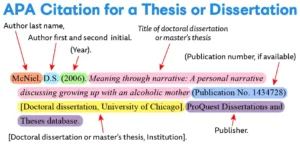When it comes to academic endeavors, understanding the thesis writing format is a significant milestone that students across the globe aspire to conquer. If you’re a student looking for assignment help in Australia, comprehending the format of thesis writing is crucial. A well-structured thesis can make the difference between an average and an outstanding academic achievement. In this comprehensive guide, we will explore the intricacies of thesis writing, covering the essential elements and structure in detail. By the end of this article, you will have a clear understanding of how to craft an impeccable thesis.
Understanding Thesis Writing
Defining a Thesis
Before delving into the format, let’s establish a clear understanding of what a thesis is. In academia, a thesis is a long piece of writing on a particular subject, especially one that is done for a higher college or university degree. It is the culmination of years of hard work, critical thinking, and extensive research. Your thesis should showcase your ability to synthesize information, formulate hypotheses, analyze data, and present your findings in a structured and coherent manner.
Purpose of a Thesis
A thesis serves several purposes:
Preparation for Research Careers:
A well-executed thesis equips individuals for research-focused careers by enhancing research methodologies.
Publication Potential:
Theses may serve as the foundation for academic publications, further disseminating research findings.
Contribution to Society:
They can lead to practical applications and societal benefits, making a positive impact on the world.
Academic Recognition:
Thesis completion is recognized as a significant academic achievement, marking the transition to an advanced level of education.
Professional Credibility:
It bolsters one’s professional credibility, demonstrating expertise in a specific area of study.
Career Advancement:
Completing a thesis writing can enhance career prospects by opening doors to research-oriented and leadership roles.
Intellectual Growth:
The journey of writing a thesis fosters intellectual growth and a deeper understanding of the subject matter.
Networking:
It often involves collaboration with academics and peers, leading to valuable networking opportunities.
Proper Thesis Writing Format
Title Page

The title page serves as the initial visual representation of your thesis writing format, functioning as the ‘cover’ that entices readers and provides essential information about the document. It holds several critical functions:
- Title of the Thesis – It is the anchor that encapsulates the essence of your research. It should be carefully crafted to offer a clear, concise, and compelling representation of your study’s central theme. An effective title not only captures the reader’s attention but also communicates the thesis’s primary focus.
- Your Name -The title page establishes your authorship and ownership of the work. It’s a declaration of your commitment and accountability for the research.
- Institutional Affiliation – Mentioning it in the situation of your work within the academic context. It signifies the academic environment where your research was conducted, offering a point of reference and validation.
- Date of Submission – It marks the culmination of your research journey. It signifies the official closure of the study and is essential for logistical and record-keeping purposes.
- Any Additional Information Specified by Your Institution – It is important to adhere to your institution’s formatting guidelines, which may vary in terms of department-specific requirements, advisor details, or other particulars.
Abstract
The abstract is a condensed yet vital component of your thesis, serving as a concise summary of the entire research endeavor. It plays a crucial role in providing readers with a quick and insightful glimpse into your work. Here’s why the abstract is of significant importance:
- Snapshot of the Research: The abstract is essentially a snapshot of your entire thesis format, encapsulating the research’s core components in a brief space. It’s often the first part of your thesis that readers encounter, making it a critical tool for grabbing their attention and conveying the essence of your study.
- Key Components: A well-structured abstract typically includes a succinct introduction to the research problem or question, a brief overview of the methodology employed, a summary of the primary findings, and the key conclusions drawn from the research. These elements are presented concisely, offering readers a clear understanding of what to expect in the full thesis.
- Efficient Navigation: For potential readers who may be deciding whether your thesis aligns with their interests or research needs, the abstract can serve as a quick filter. If it resonates with their requirements, they are more likely to explore your thesis further.
- Word Limit: The prescribed word limit, often around 250-300 words, requires precision and a focus on the most critical aspects of the study. This brevity compels authors to condense their thoughts and ensure clarity in the communication of their research.

Table of Contents
The Table of Contents is an integral navigational tool for readers, offering a structured overview of the thesis’s organization. Its importance lies in the following aspects:
- Clarity and Structure: The Table of Contents helps in organizing your thesis piece logically, making it more reader-friendly. By breaking down your work into sections, subsections, and chapters, it provides clarity regarding the flow and structure of the thesis.
- Reader Convenience: For readers, the Table of Contents functions as a roadmap. It allows them to locate specific sections or topics quickly, streamlining the navigation process. Readers can refer to the Table of Contents to identify the information they need and jump directly to the relevant section.
- Organized Presentation: By creating a comprehensive Table of Contents, you demonstrate to readers that your thesis is organized, well-structured, and follows a logical sequence of thought. This can positively influence their perception of the research’s quality and professionalism.
List of Figures and Tables
The List of Figures and Tables is particularly crucial when your thesis incorporates visual aids like charts, graphs, or tables. Here’s why this section is significant:
- Easy Reference: Each entry in the List of Figures and Tables provides a caption and the corresponding page number. This feature enables readers to locate specific visual aids effortlessly and understand their context.
- Visual Comprehension: Visual aids often convey complex information more efficiently than text alone. By including a List of Figures and Tables, you facilitate readers’ understanding and interpretation of your research’s visual components.
- Organized Presentation: Like the Table of Contents, the List of Figures and Tables contributes to the overall organization and professionalism of your thesis. It shows that you’ve taken care to present visual data in an orderly and comprehensible manner.
Introduction
The introduction sets the stage for your thesis writing format. In this section, you should:
- Introduce the research problem or question.
- Provide background information on the topic.
- State the purpose and objectives of your study.
- Present a concise review of relevant literature.
Literature Review

The literature review is a critical component that demonstrates your understanding of existing research in your field. Here, you should:
- Summarize and synthesize relevant studies.
- Identify gaps in the existing literature.
- Explain how your research addresses these gaps.
Methodology
This section details the methods you used to conduct your research. It should include:
- Research design
- Data collection methods
- Data analysis techniques
- Ethical considerations, if applicable
Results
The Results section is where you present the culmination of your research efforts. It holds key importance for several reasons:
- Clear and Organized Presentation: This section demands clarity and organization in presenting your research findings. Use tables, graphs, and charts when relevant to enhance the clarity of your data. Visual aids help readers comprehend complex data more easily.
- Empirical Evidence: The Results section provides the empirical evidence that substantiates your research and answers your research questions. It’s the heart of your thesis format, showcasing what you’ve discovered.
- Objective Data: Research results are objective and data-driven, making them a cornerstone of your study. They allow readers to assess the validity and reliability of your research.
Discussion
The Discussion section is where you transition from presenting data to interpreting and contextualizing it:
- Interpretation: In this section, you not only restate your findings but also provide analysis. You explain the meaning and significance of your results and how they relate to your research question.
- Implications: Discuss the broader implications of your findings. How do they contribute to the field or address the research problem you identified? What do they suggest about the topic at large?
- Limitations and Future Research: Address the limitations of your study, acknowledging any constraints or challenges encountered during the research. Suggest areas for future research, identifying unanswered questions or potential improvements to your methods.
Conclusion
The Conclusion section serves as a reflective summary of your thesis:
- Reiteration: It reaffirms the main points of your thesis, emphasizing your thesis statement and summarizing the key findings.
- Broader Perspective: The conclusion should offer a broader perspective on the significance of your research. How does it fit into the larger academic or practical context? What are its implications for the field or the real world?
- Closure: It serves as the final chapter of your thesis format, providing closure to your argument and research journey. A well-crafted conclusion leaves a lasting impression on your readers.
References

The References section is a fundamental element of academic integrity:
- Citation Style: List all the sources you cited in your thesis following a specific citation style, such as APA, MLA, or Chicago. Adhering to a consistent and recognized style is essential for academic credibility.
- Validation: Proper referencing validates the accuracy and reliability of your work. It demonstrates that your research is grounded in established scholarship and contributes to the academic discourse.
Appendices
The Appendices section is where you include additional materials that enhance the reader’s understanding of your research:
- Supporting Documentation: This section may include questionnaires, surveys, supplementary data, or any other materials that, while not essential to the core thesis, provide valuable context and background.
- Clarity and Transparency: Appendices offer transparency by providing the full scope of your research process. They allow readers to assess the methods and data in detail, ensuring transparency and replicability.
Formatting Guidelines
-
Font and Margins
Your thesis should be easy to read. Use a legible font (e.g., Times New Roman, Arial) and set the margins to your institution’s specifications (often 1 inch or 2.54 cm).
-
Line Spacing
Use double-spacing for the main text, but single-spacing is generally acceptable for long quotations, footnotes, and references.
-
Page Numbers
Number all pages consecutively, usually in the header or footer.
-
Headings
Use a consistent and clear heading hierarchy, usually with distinct formatting for each level (e.g., bold, italics, different font sizes).
-
Citations and References
Adhere to the specific citation style required by your institution. Ensure accurate and consistent citations throughout your thesis.
Proofreading and Editing
Before submitting your thesis, make sure to:
- Proofread for grammar, spelling, and punctuation errors.
- Check for consistency in formatting and citation.
- Seek feedback from peers, professors, or professional editors.
- Review your work for clarity and coherence.
[Check out: Proofreading Tool]
Final Thoughts
Format for thesis writing is a challenging yet rewarding endeavor. Understanding the format is the first step toward creating a successful thesis. If you ever need assignment help in Australia, you can seek guidance and support from experienced professionals in your field. Remember, your thesis is a testament to your dedication, research abilities, and academic prowess. With the right format and approach, you can leave a lasting mark on your field of study.
In conclusion, crafting a thesis is a complex but highly rewarding process. By following the format and guidelines outlined in this guide, you will be well on your way to producing a thesis that not only meets academic standards but also contributes to the body of knowledge in your field.
So, embrace the challenge, stay focused, and produce a thesis that showcases your expertise and dedication to your area of study. GOOD LUCK!


